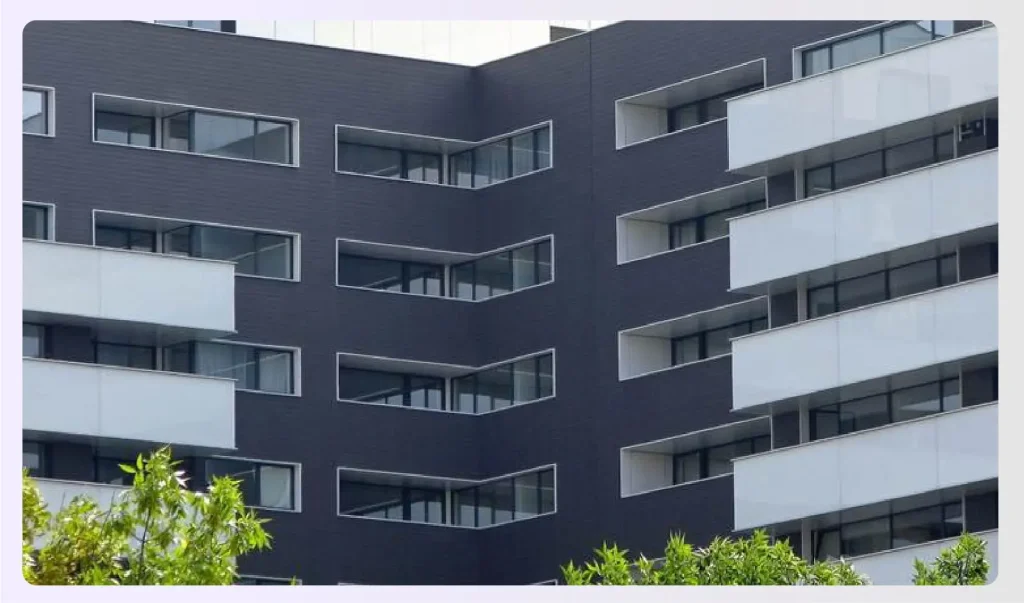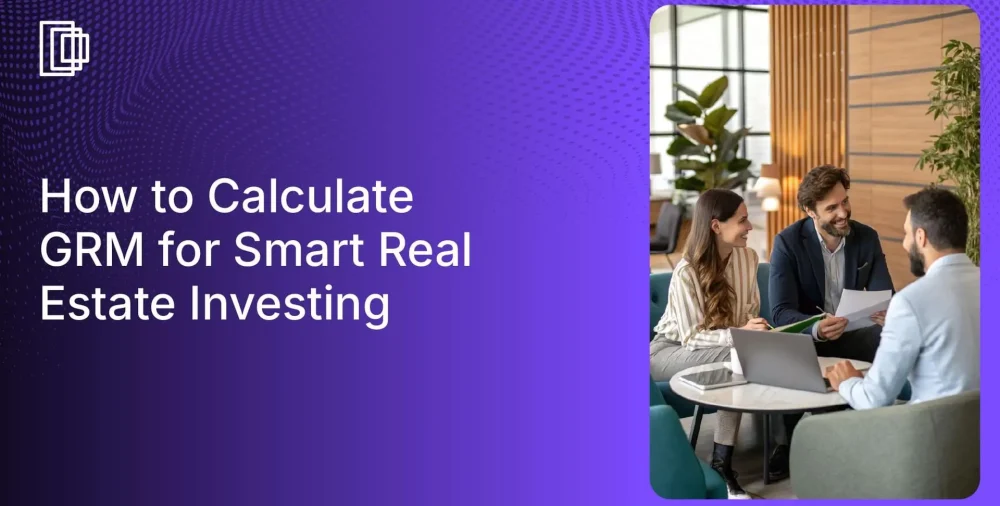Table of Contents
When diving into real estate investing, it’s easy to get overwhelmed. You’re faced with multiple investment properties, each with a different asking price and rental income. How do you quickly compare them to find a good investment without getting lost in complex spreadsheets?
This is where a simple metric called the Gross Rent Multiplier (GRM) comes in. It’s a favorite screening tool for investors. It offers a “back of the envelope” easy way to gauge a property’s market value based purely on its rental income.
In this guide, we’ll cover exactly how to calculate GRM using its simple formula. We’ll also explore its advantages, its significant disadvantages, and why it’s only a starting point in your analysis of any deal in the real estate market.
What Is the Gross Rent Multiplier (GRM)?
Have you ever looked for a quick way to value commercial properties before buying one? The most common way to determine the fair market value is through the Gross Rent Multiplier (GRM). This is the ratio of a property’s price to its scheduled rental income before deducting operating expenses like utilities or taxes. It’s a go-to screening tool for real estate investing to quickly compare potential deals.
In simple terms, the GRM tells you the number of years a property would take to pay for its own cost from sources of income like rent. A lower GRM is almost always better for an investor. While it’s a simple calculation, it’s not a precise tool for true property value. It’s a starting point, not the final word. We’ll explore how to calculate GRM in the next section.

Understanding how to calculate GRM for commercial properties, credits: pexels.com
How to Calculate GRM: The Formula and a Step-by-Step Example
The gross rent multiplier formula is a straightforward way to compare the purchase price of a property to its income. We will show you how to calculate GRM easily. You just need two key numbers: the property’s price and its annual gross rental income.
The GRM Formula:
Gross Rent Multiplier = Property’s Market Value / Gross Annual Rental Income
Example:
Let’s say a rental property has an asking price of $144,000.
It produces an annual rental income of $14,400 (from a monthly rent of $1,200).
GRM Calculation: $144,000 / $14,400 = 10
This property has a GRM of 10.
What Does the GRM of 10 Mean?
So, what does this GRM of 10 actually mean? It means an investor is willing to pay 10 times the gross annual rental income to buy this asset. When you compare this GRM calculation with similar properties in the area, it can reveal potential acquisition opportunities; a property with a smaller GRM than others might be a good investment.
Remember, when figuring out how to calculate GRM, it is the annual figures which are used, not the monthly ones. If the Gross Rent Multiplier is too high or low compared to recently sold properties, it might indicate a problem or, conversely, a case of gross over-pricing. A low grm is generally preferred.
Let’s break this down further. Let’s compare two commercial properties—one that generates $5,000 in rent, and another that collects $5,500. We have to contextualize those numbers against the property cost. If both cost the same, the one with higher rent is the better deal. Right? But what if the two properties are perched at different prices? This is where knowing how to calculate GRM becomes essential.

Comparing GRM for a multifamily property credits: pexels.com
GRM in the Real World: Case 1
To use the standard GRM formula, we first find the annual gross income.
- Property A: Price = $2,000,000. Monthly Rent = $5,000.
- Annual Rent: $5,000 x 12 = $60,000
- GRM: $2,000,000 / $60,000 = 33.33
GRM in the Real World: Case 2
- Property B: Price = $1,100,000. Monthly Rent = $3,500.
- Annual Rent: $3,500 x 12 = $42,000
- GRM: $1,100,000 / $42,000 = 26.19
Using the Gross Rent Multiplier method, Property B (GRM of 26.19) is the better investment option over Property A (GRM of 33.33) because it has a lower GRM, meaning it pays for its price faster. This is a simple easy way to get a fair comparison. This metric is similar to the price-to-earnings (P/E) ratio in the stock market. You can also reverse the equation to find a property’s current market value: Price = Potential Gross Income x Gross Rent Multiplier.
Advantages of GRM
The GRM is a popular rule of thumb for a reason. Here is why learning how to calculate GRM is so valuable:
- It’s Simple: The biggest advantage is that it requires very little information, making it an easy tool for a quick valuation of investment properties. You can use it to filter out properties with a low price relative to their gross potential income. This is a great starting point for any investor.
- Better than Price-Per-Unit: GRM overcomes the flaws of a simple “price-per-unit” comparison because it actually considers the income stream (the rent), which the other method doesn’t.
- Market-Sensitive: Because GRM is a ratio of price and rent, if one variable changes, the outcome changes. This gives a seller or buyer an indication of whether the price is aligned with the overall real estate market condition.
- Uses Market Data: Rent is market-driven by what tenants are willing to pay. By factoring in this market data, GRM is a reasonably reliable instrument. This metric, sometimes called the gross income multiplier (GIM) when annual numbers are used, is a great “back of the envelope” easy way to check a deal.
Disadvantages of GRM
While knowing how to calculate GRM is useful, it’s not a perfect metric. Here are its limitations:
- Ignores Expenses: Because it uses gross income, not net income, GRM fails to differentiate between properties with high or low operating expenses and vacancy rates. This is one of the main differences between GRM and cap rate.
- Ignores Net Income: A property is ultimately purchased based on its net operating income (NEI) or net earning power (NEP). Two properties could have the same NEP even if their gross incomes differ significantly, which GRM wouldn’t show.
- Assumes Uniformity: The method assumes similar properties have similar expenses, but this is rarely true. Factors like deferred maintenance, property age, and management quality can cause expense ratios to vary widely.
- Misses Other Factors: This rule of thumb doesn’t account for the economic life of comparable properties or changes in interest rates. An inexperienced investor might assign the same rate to a new property and a 50-year-old one if their incomes are equal, even though the new one may offer a higher return and a higher cap rate over time.
Design in Foyr to Improve your Property Metrics
Understanding metrics like GRM and capitalization rate is about maximizing your potential return. The physical design of your first property plays a huge role in securing a high amount of rental income and, thus, a better GRM. As a leading interior design software Foyr helps you optimize this.
- Use Foyr Neo to create stunning 3D floor plans that attract tenants.
- Experiment with virtual staging to furnish your multifamily property layouts.
- Generate photorealistic 12K renders to market your value of the property effectively.
- Use our AI-powered tools to quickly test different design ideas.
- Collaborate with clients and contractors seamlessly on our cloud platform.
By presenting a property in its best light, you can justify higher rents, reduce vacancy rates, and improve your property’s market value. This is how smart design directly impacts your real estate investing numbers, which is just as important as knowing how to calculate GRM.
Sign up for your 14-day free trial of Foyr Neo today.
FAQs
What is a good GRM for a rental property?
There is no single “good” number, as the Gross Rent Multiplier is a comparative tool. A “good” GRM in one real estate market might be considered high in another. Generally, a lower GRM (e.g., 4-7) is seen as better for a buyer, but in high-demand areas, a GRM of 10-12 is common. The best approach is to compare your target property’s GRM to similar, recently sold properties in the same neighborhood.
What is the 1% rule for GRM?
The 1% rule is actually a different rule of thumb and isn’t directly related to GRM. The 1% rule suggests that a property’s gross monthly rent should be at least 1% of its purchase price (e.g., a $200,000 property should rent for at least $2,000/month). The key difference is that GRM uses annual rent to create a multiplier, while the 1% rule is a quick monthly cash flow guideline.
What is an average GRM?
Averages for GRM are not national; they are highly local and vary dramatically by city, neighborhood, and property type. An average in a low-cost-of-living area might be 5, while an average in a high-demand coastal city could be 12 or more. Instead of looking for a national average, you should always focus on the local average by analyzing recent sales data for comparable properties.
What is the full form of GRM?
The full form is Gross Rent Multiplier. It’s a simple metric used in real estate investing to quickly compare the prices of investment properties based on their gross income. It is best used as a starting point, alongside other, more detailed metrics like the cap rate (or capitalization rate), to get a complete picture of what makes a good investment.












Leave A Reply